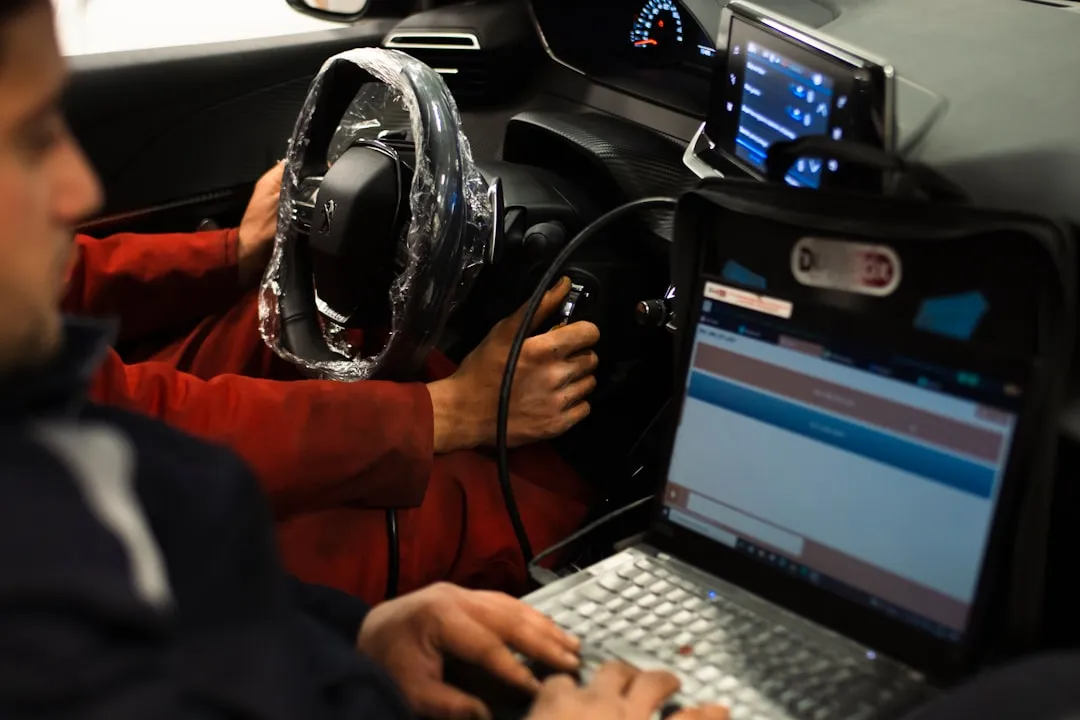Reviewed by Julianne Ngirngr
When German security researcher David Colombo stumbled across an exposed TeslaMate dashboard while browsing the internet, he had no idea he was about to uncover one of the most significant automotive cybersecurity vulnerabilities of recent years. What started as curiosity about Tesla's data logging tools led to remote control access to over 25 Teslas across 13 countries. The 19-year-old discovered that hundreds of Tesla owners had inadvertently exposed their vehicles to anyone on the internet through misconfigured third-party software—a vulnerability that would demonstrate how enthusiasm for data can create massive security blind spots.
The scope of this exposure is staggering. Internet scanning services have identified over 1,400 misconfigured instances of TeslaMate dashboards accessible without authentication, representing one of the largest automotive cybersecurity exposures ever documented. What makes this particularly concerning is that attackers can extract Tesla API keys from these exposed systems, essentially giving them digital car keys with the ability to unlock doors, disable security systems, track movements, and even start vehicles remotely. This represents a fundamental shift in automotive security risks—where your car keys become API keys, and a poorly configured dashboard can expose your daily routine to strangers worldwide.
What is TeslaMate and why is it everywhere?
Let's break down what we're dealing with here. TeslaMate is an open-source, self-hosted data logger that Tesla enthusiasts use to access data their vehicles normally keep hidden. Think of it as your car's personal fitness tracker—it provides detailed statistics about each drive including energy consumption, efficiency metrics, location history, and route analysis.
The appeal is obvious. Tesla's own interface doesn't provide the granular insights that TeslaMate offers. The software lets you define specific areas like "Home" or "Work" and generate detailed statistics based on those locations. You can track charging costs over time, analyze driving patterns, and even monitor your car's music history. Since it's self-hosted, all data remains with the user, which appeals to privacy-conscious Tesla owners who don't want their data stored on external servers.
The software runs on home computers of Tesla hobbyists and connects directly to Tesla's API using credentials tied to the owner's account. Some advanced users have even integrated TeslaMate with home automation systems, creating sophisticated smart home ecosystems around their vehicles. But this very appeal—the promise of granular data control and privacy—became the catalyst for widespread insecurity, as users prioritized functionality over security configuration.
The anatomy of a digital car key heist
Here's where things get seriously concerning. Colombo discovered that TeslaMate dashboards were unprotected by default after stumbling across that first exposed dashboard. Using internet scanning tools, he found that security flaws in the web dashboard—like allowing anonymous access and using default passwords that users never changed—had resulted in hundreds of TeslaMate dashboards being exposed directly to the internet.
The technical attack path is surprisingly straightforward, revealing why default credentials remain such a persistent problem in self-hosted applications. The TeslaMate project includes services running on MariaDB (port 3306), Grafana (port 3000), and an admin panel (port 8888). Attackers discovered that Grafana dashboards running on port 3000 often used default credentials, allowing unauthorized login. Once inside, they could dump Tesla API keys from the database using simple SQL queries like "SELECT * from cars."
What makes this particularly dangerous is that Tesla tokens and refresh tokens function like digital car keys. With access to these credentials, attackers can add new drivers, open doors, steal contents, and control various car functions like turning on the air conditioner or honking the horn.
To prove the vulnerability was real—and establish credibility for responsible disclosure—Colombo verified this capability with a Tesla owner in Ireland. After reaching out on Twitter (now X), the skeptical owner demanded proof, so Colombo provided the vehicle's VIN number from the exposed logs. Once the owner confirmed it was his car, Colombo demonstrated remote access to door locks, windows, horn activation, and keyless driving initiation. As Colombo later explained, he could literally figure out where the car was and if he had been in the vicinity, could have walked up to the car, turned off security mode, unlocked the doors, climbed in, started the engine and taken a road trip.
Global scope meets local consequences
The geographic spread of this vulnerability reveals the international nature of Tesla's enthusiast community and the uniform security challenges they face. Colombo's research revealed exposed Teslas in the U.K., Europe, Canada, China and across the United States, with more than 30 Teslalogger instances on the public internet, most from the European Union. More recent scanning efforts using Censys identified over 1,400 misconfigured instances that allow access without authentication.
This global distribution pattern suggests that the vulnerability wasn't concentrated in any single region with poor cybersecurity practices—instead, it reflects the universal challenge of self-hosted security tools where users across all technical sophistication levels can inadvertently create massive security exposures.
The personal impact extends far beyond simple vehicle control. Attackers accessing misconfigured dashboards can track live location, check if the driver is present, verify if the car is locked, and monitor trunk status. Even more concerning, they can set virtual boundaries around vehicles and receive alerts, potentially enabling stalking or facilitating planned robberies by monitoring owners' daily routines.
Consider the intelligence value this data provides to malicious actors: they could determine when you leave for work, how long you're gone, where you park, and whether your car is locked. They could track your charging patterns to know when you're stationary for extended periods. The data reveals intimate details about your life—your home address (often labeled in the system), work location, favorite restaurants, and travel patterns. This level of personal surveillance capability represents a quantum leap from traditional vehicle theft, where criminals had to physically observe targets.
The vulnerability classification underscores the severity: NIST rated the security flaw with a 9.8/10, which is "critical". This puts it in the same category as the most severe cybersecurity vulnerabilities, reflecting the potential for widespread harm and the difficulty of detection by affected users.
Swift response, lingering lessons
The responsible disclosure process moved quickly once the scope became clear. The maintainer of TeslaMate quickly patched the vulnerabilities after being reported, implementing encryption to store Tesla API keys and refresh tokens in the database and adding authentication to the admin panel.
Tesla's response was equally dramatic—the company revoked thousands of drivers' API keys, a mass security action that suggests their internal threat assessment identified exposure far beyond the initially documented cases. The scale of Tesla's response—affecting thousands rather than dozens of users—indicates they discovered the vulnerability had potentially compromised a significant portion of their API-connected third-party ecosystem.
However, the fix requires manual intervention. TeslaMate pushed a software fix that users have to manually install to prevent unauthorized access. This highlights a fundamental challenge with self-hosted security tools—updates don't happen automatically, and many users may remain vulnerable simply because they're unaware of the need to upgrade or lack the technical knowledge to implement security configurations properly.
The incident reveals systemic issues in how third-party automotive software handles security by design. The vulnerabilities stem from CWE-256 (storing sensitive information like passwords and API keys as plaintext) and CWE-1188 (software initialized with insecure default resources or values)—both preventable issues that should be caught in security reviews but represent common failures in open-source projects where security isn't prioritized during initial development.
What this means for connected vehicle security
This incident isn't just about Tesla or TeslaMate—it's a preview of what's coming as vehicles become increasingly connected and the automotive cybersecurity threat landscape evolves. The fundamental issue is that connected vehicles are only as secure as the weakest component in their data ecosystem, and third-party tools often represent that weak link. While Tesla's API has proper role-based access control, the security model breaks down when users grant broad permissions to poorly secured applications.
The democratization of both cybersecurity tools and attack techniques adds a crucial dimension to this threat landscape. As Colombo noted, the age of cyber criminals has dropped significantly over the past decade because hacking tools have become more accessible. The researcher who discovered this vulnerability was just 19 years old when he gained full remote control of more than 25 Teslas, demonstrating that sophisticated automotive attacks no longer require years of specialized experience. This trend toward younger, more accessible cybercrime means that connected vehicles face threats not just from organized criminal groups, but from curious teenagers with internet access and basic technical skills.
The same internet scanning tools that researchers use to identify vulnerabilities—like the Censys platform that revealed over 1,400 exposed instances—are available to malicious actors. This creates a race between security researchers and criminals to discover and exploit the same vulnerabilities, with connected vehicle owners caught in the middle.
For Tesla owners currently running TeslaMate, the immediate recommendations are clear: upgrade to the latest version, change default credentials, and remove services from search engine results. If running locally, disable port forwarding on port 4000 and enable authentication as per documentation.
But the bigger lesson is about the security model itself. When your car keys become API keys, traditional notions of physical security no longer apply. The boundary between digital and physical security has blurred beyond recognition, and our security practices need to evolve accordingly. The automotive industry needs to develop comprehensive security frameworks that account for the entire ecosystem of third-party applications, not just the vehicles themselves, while also considering that the threat actors targeting these systems are becoming younger, more numerous, and equipped with increasingly powerful tools.
Bottom line: This TeslaMate incident represents a new category of automotive cybersecurity risk where enthusiast tools can inadvertently expose vehicles to remote attack. As connected vehicles become mainstream, the industry needs to develop better security frameworks that account for the entire ecosystem of third-party applications, not just the vehicles themselves. The digital car key is here to stay—we just need to get better at protecting it.














Comments
Be the first, drop a comment!